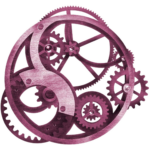Rascón-Gómez, M.T. & Calderón-Almendros, I. (2024)
The participatory social documentary has shown great potential as a research tool for social and educational transformation. Under the critical paradigm and the methodological alternative of Participatory Action-Research, this documentary aims to provoke transformations, turning all the subjects involved (filmmakers, protagonists and spectators) into protagonists and narrators of the story. To do this, a group of activists for inclusive education and a team of researchers group of researchers from the University of Malaga linked to the research project “Emerging narratives about the inclusive school from the Social Model of Disability. Resistance, resilience and social change” (RTI2018-099218-A-I00, and financed by the Spanish Ministry of Science, Innovation and Universities), accompanied by the filmmaker Cecilia Barriga, come together to create a documentary piece that seeks to make viewers aware of the suffering of people who are discriminated at schools because of their gender, race or disability, as well as to involve them in transforming these conditions.
This work falls within the critical paradigm, which differs from other approaches such as positivist or interpretive, in that it not only seeks to obtain information to understand reality but also to cause transformations in the contexts in which it intervenes. And it does so from a liberating and emancipating dynamic of the people involved in it (Escudero, 1987). Within the framework of the critical paradigm, participatory action research emerges as a methodological alternative, which considers people as active subjects capable of causing changes in society and in the institutions that make it up, including the school institution (Alberich, 2002).
This artistic creation, whose documentary work has been shared by the filmmaker and the research team (made up of families and professionals involved in respecting the right to an inclusive education), draws on a series of audiovisual resources previously generated by the entire group of people behind the audiovisual piece: workshops, scientific meetings, state conversations between the educational community, work groups, Participatory Action-Research processes, biographical interviews, observations, assemblies, focus groups, personal and diary records, collaborative constructions, blog entries, press and television publications… A whole range of strategies for collecting information, processes for building new narratives and actions aimed at transforming everyday life.
In order to make people participate in these social and educational problems, the documentary that we present aims to show a whole series of narratives that respond to the construction of a movement to fight for the rights of minors with disabilities in schools. One of the most significant narratives is the one carried out by Rubén Calleja and his family, based on the battle against the school discrimination suffered by this young man because of his disability. Another of the stories shown in the documentary is the life project created by Raúl Aguirre and his family. This young man opens the doors of his home to us and shows us how he has managed to lead a full and autonomous life despite the stigma associated with his disability. Also specially significant are the stories of Zulaika, Alberto, Jorge, Antón, Indira, Zoe, Malena, Darío, Leo, Mariama, Yasmina… a group of boys and girls who have been discriminated against at school because of their disability, their race, their socioeconomic level, their sexual identity, their academic performance, etc. All of them have come together to form the group “Students for Inclusion”, and together with a team of researchers from the University of Malaga (Spain) they have created the Guide “How to make your school inclusive” (Calderón, Mojtar y Cabello, 2021).
This work is not limited to documenting the stories of a series of young people and families marked by a series of social categories and stigmas that oppress and discriminate them, but also those of a movement made up of a group of people who, supported by their own experience, aim to contribute to creating a more inclusive society. Recalling their stories has allowed the key actors of the film to take stock of their achievements, and recognize a social narrative of what has happened to them: the one they have lived through, but also the one that preceded them and the one that they now contribute to generating. It contributes to completing their identity construction processes, at the same time that it allows generating political movements of resistance, to make schools more democratic (Freire, 1970; Giroux 2006; McLaren and Kincheloe, 2008).
Bibliographic references
- Alberich, T. (2002). “Perspectivas de la Investigación Social”, en T. Rodríguez Villasante, (et al.). Investigación Social Participativa. Construyendo ciudadanía. Madrid: El Viejo Topo, 65-78.
- Calderón, I; Mojtar, L. y Cabello, F. (2021). Cómo hacer inclusiva tu escuela. Madrid: Ministerio de Educación y Formación Profesional.
- Escudero, J. (1987). La investigación-acción en el panorama actual de la investigación educativa: algunas tendencias. Revista de Innovación e Investigación Educativa, 3, 14-25.
- Flaherty, R. (1939). “La Función del Documental”. En Textos y Manifiestos del Documental. Recuperado de http://www.docupolis.org/historiayteoria/texto01.htm
- Freire, P. (1970). Pedagogía del oprimido. Montevideo: Tierra Nueva.
- Giroux, H. (2006). El nuevo autoritarismo, la pedagogía crítica y la promesa de la democracia. Revista Electrónica Sinéctica, 28, 1-19.
- McLaren, P. y Kincheloe, J.L. (Coords.) (2008). Pedagogía crítica. De qué hablamos, dónde estamos. Barcelona: GRAO.
